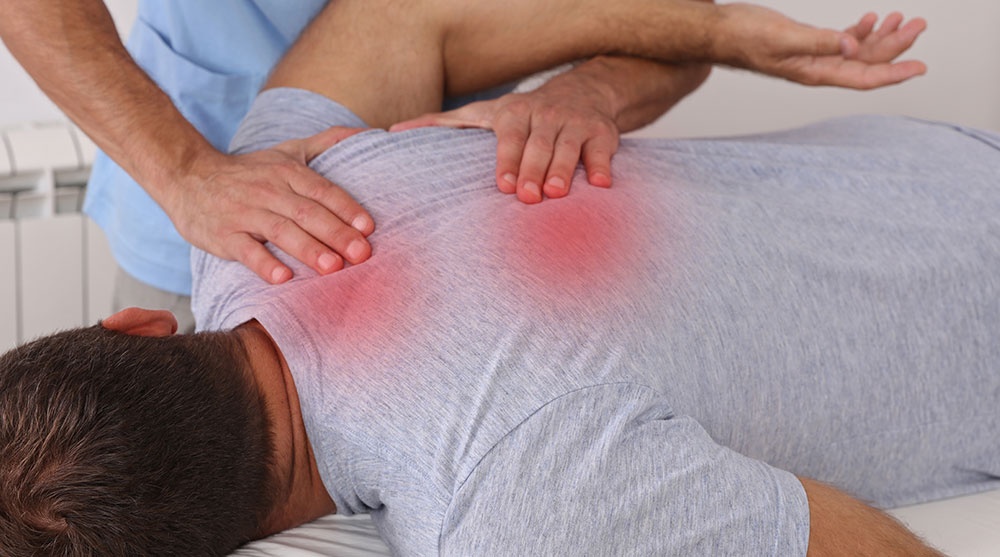Myofascial Triggers Points
- Tara Andresen
Categories: Acupuncture Treatment Blood Sugar Management Digestive Issues Dry Needling Healthcare Practitioners IBS Toronto IBS Treatment Licensed Naturopathic Doctor Massage Therapy Naturopath Naturopath Toronto Naturopathic Clinics Naturopathic Consultation Naturopathic Medicine Naturopathic Products Naturopathy Pain Management PCOS Treatment SIBO Treatment Skin Treatment Stress Management Weight Management Women’s Health Treatment

Myofascial Triggers Points Cause Pain – a Naturopath Explains
Myofascial trigger points (TrPs) are one of the most overlooked and ignored causes of acute and chronic pain and simultaneously constitute one of the most common musculoskeletal pain conditions. TrPs can occur: (1) on their own such as with neck pain or back pain; (2) in conjunction with other conditions such as osteoarthritis, carpal tunnel syndrome or plantar fasciitis or; (3) with injuries such as whiplash. TrPs are also associated with visceral conditions and dysfunctions including endometriosis interstitial cystitis, IBS, menstrual cramping and prostatitis.
What is a Myofascial Trigger Point?
Myofascial Trigger Point (TrP) = a hyperirritable spot in a taut band of skeletal muscle that is painful on compression, stretch, overload or contraction of the tissue. Compression of TrPs in muscle often causes referred pain distant to the actual spot of compression.
Two kinds of Myofascial Trigger Points (TrPs) – Active vs. Latent:
1. Active TrPs – produce local and referred pain following applied pressure
2. Latent TrPs – do not produce local and referred pain following applied pressure
* Both kinds of TrPs can provoke motor dysfunctions ex. Muscle weakness, spasm, stiffness and decreased range of motion. In some cases people also experience numbness, tingling or burning as a result of TrPs.
Three Characteristics of Muscle TrPs:
1. Taut Muscle Bands – TrPs are found within contracted muscle fibers called taut bands. Taut bands can be palpated by hand and feel like tense strings within the belly of the muscle. Current thinking around the formation of taut bands and subsequent pain is focused on the idea that local muscle overload or overuse occurs and the muscle cannot respond adequately and contraction is sustained. For example, muscle failure and TrP formation is commonly seen in the upper trapezius (shoulder/ neck) muscles of people who spend most of their day on a computer.
2. Local Twitch Response (LTR) – Manual strumming or needling of a TrP usually results in a local twitch response (LTR), which is a sudden contraction of muscle fibers in a taut band. The number of LTRs experienced may be related to the hyperirritability of the muscle TrP. Eliciting LTRs is an important part of the treatment process during a myofascial acupuncture or dry needling session.
3. Muscle Pain – on compression a TrP, both local and/or referred pain can occur. The sensation of local pain is a result of the release of neuropeptides that cause inflammation. Referred pain highly characteristic of myofascial pain.
NEXT BLOG – Treatment for TrPs – In her next blog, Dr. Andresen will discuss how a specific form of acupuncture she does called Myofascial Release or Dry Needling is a highly effective in treating pain due to TrPs.
To find out more about Myofascial Trigger Points, contact NDcare or book your first treatment session with Dr. Andresen at one of her Toronto Naturopathic Clinics.